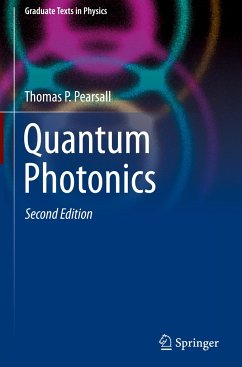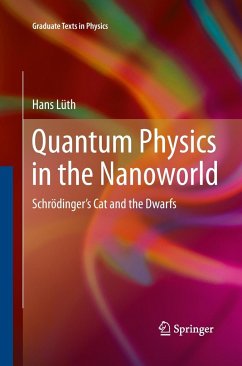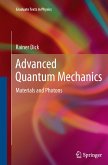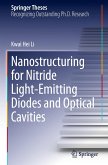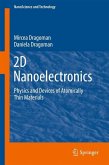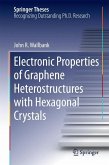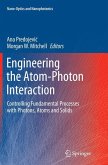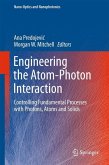Photonics is the discipline of electrons and photons working in tandem to create new physics, new devices and new applications. This textbook employs a pedagogical approach that facilitates access to the fundamentals of quantum photonics. Beginning with a review of the quantum properties of photons and electrons, the book then introduces the concept of their non-locality at the quantum level. It presents a determination of electronic band structure using the pseudopotential method, enabling the student to directly compute the band structures of most group IV, group III-V, and group II-VI semiconductors. The book devotes further in-depth discussion of second quantization of the electromagnetic field that describes spontaneous and stimulated emission of photons, quantum entanglement and introduces the topic of quantum cascade lasers, showing how electrons and photons interact in a quantum environment to create a practical photonic device.
This extended second editionincludes a detailed description of the link between quantum photon states and the macroscopic electric field. It describes the particle qualities of quantum electrons via their unique operator algebra and distinguishable behavior from photons, and employs these fundamentals to describe the quantum point contact, which is the quantum analogue of a transistor and the basic building block of all nanoscopic circuits, such as electron interferometers.
Pearsall's Quantum Photonics is supported by numerous numerical calculations that can be repeated by the reader, and every chapter features a reference list of state-of-the art research and a set of exercises. This textbook is an essential part of any graduate-level course dealing with the theory of nanophotonic devices or computational physics of solid-state quantum devices based on nanoscopic structures.
This extended second editionincludes a detailed description of the link between quantum photon states and the macroscopic electric field. It describes the particle qualities of quantum electrons via their unique operator algebra and distinguishable behavior from photons, and employs these fundamentals to describe the quantum point contact, which is the quantum analogue of a transistor and the basic building block of all nanoscopic circuits, such as electron interferometers.
Pearsall's Quantum Photonics is supported by numerous numerical calculations that can be repeated by the reader, and every chapter features a reference list of state-of-the art research and a set of exercises. This textbook is an essential part of any graduate-level course dealing with the theory of nanophotonic devices or computational physics of solid-state quantum devices based on nanoscopic structures.
"The book is suitable as a textbook because of its pedagogical approach to the fundamentals of quantum photonics. Every chapter ends with a set of exercises and a reference list. This textbook is recommended for a graduate-level course on quantum photonics." (Reva Gar, Optics & Photonics News, osa-opn.org, October, 2021)
"There is an in-depth treatment of quantum-mechanical tunneling together with MATLAB source code for calculations of sequential tunneling. ... the book offers impressive breadth of topics, effortlessly compressed into fewer than 300 pages. There is no indication that this book has already been used for pedagogical purposes but, with the included exercises, it is eminently suited for such usage." (K. Alan Shore, Optics & Photonics News, osa-opn.org, October, 2017)
"The book is surely interesting because it introduces many arguments that are usually only marginally explained or ignored altogether. ... it may be recommended asa text of support for a course in quantum optics or photonics ... ." (Mario Bertolotti, Contemporary Physics, January 28, 2019)
"There is an in-depth treatment of quantum-mechanical tunneling together with MATLAB source code for calculations of sequential tunneling. ... the book offers impressive breadth of topics, effortlessly compressed into fewer than 300 pages. There is no indication that this book has already been used for pedagogical purposes but, with the included exercises, it is eminently suited for such usage." (K. Alan Shore, Optics & Photonics News, osa-opn.org, October, 2017)
"The book is surely interesting because it introduces many arguments that are usually only marginally explained or ignored altogether. ... it may be recommended asa text of support for a course in quantum optics or photonics ... ." (Mario Bertolotti, Contemporary Physics, January 28, 2019)

